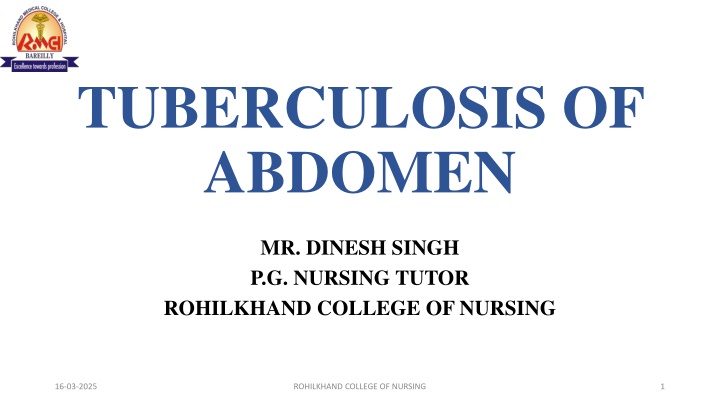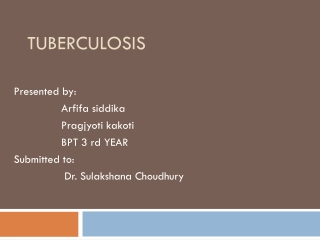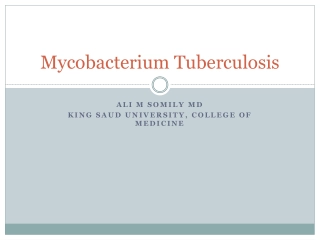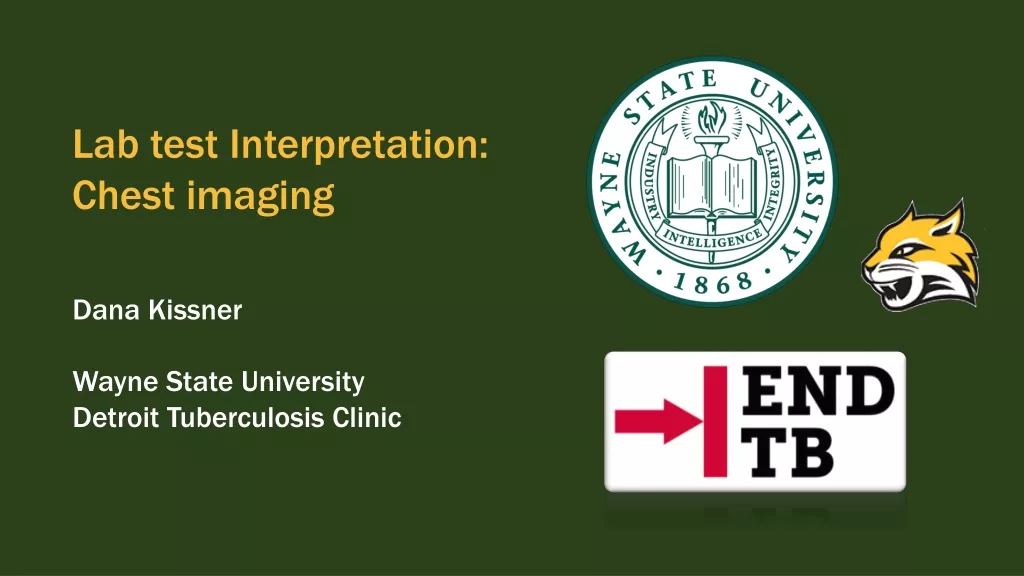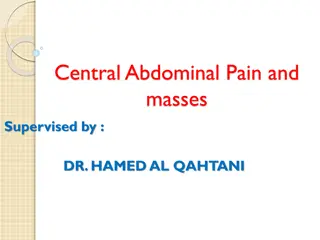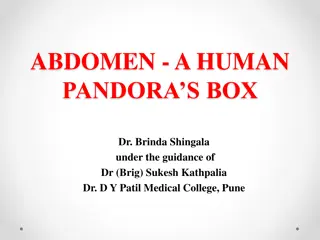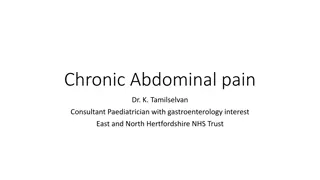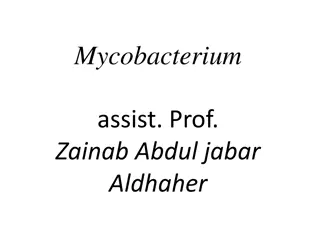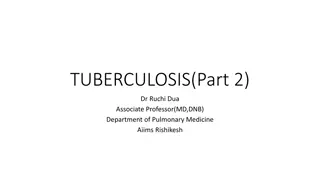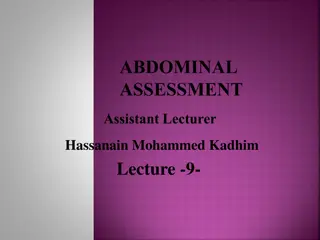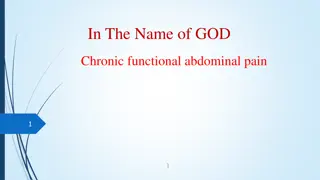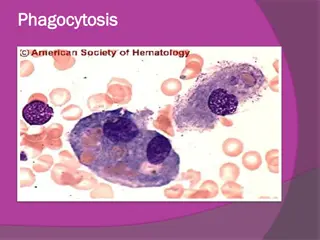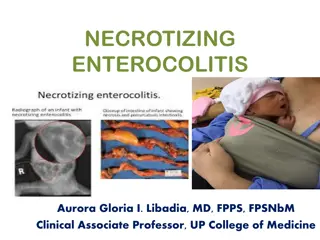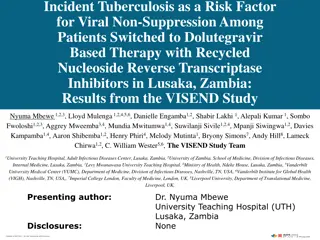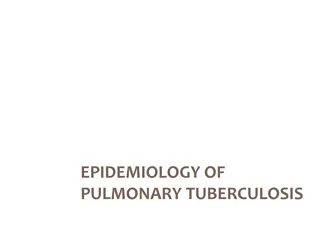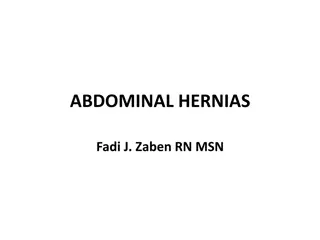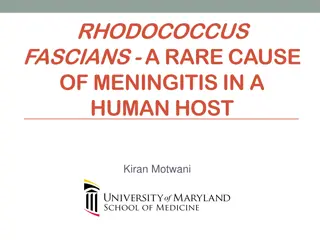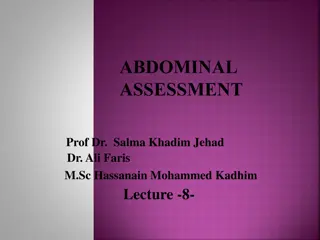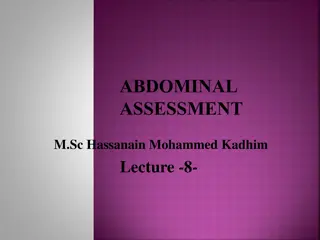Abdominal Tuberculosis: Causes, Symptoms, Diagnosis
Abdominal tuberculosis, caused by Mycobacterium tuberculosis, affects abdominal organs like stomach and intestines. Learn about its causes, symptoms, diagnostic evaluation, and more.
Download Presentation

Please find below an Image/Link to download the presentation.
The content on the website is provided AS IS for your information and personal use only. It may not be sold, licensed, or shared on other websites without obtaining consent from the author.If you encounter any issues during the download, it is possible that the publisher has removed the file from their server.
You are allowed to download the files provided on this website for personal or commercial use, subject to the condition that they are used lawfully. All files are the property of their respective owners.
The content on the website is provided AS IS for your information and personal use only. It may not be sold, licensed, or shared on other websites without obtaining consent from the author.
E N D
Presentation Transcript
TUBERCULOSIS OF ABDOMEN MR. DINESH SINGH P.G. NURSING TUTOR ROHILKHAND COLLEGE OF NURSING 16-03-2025 ROHILKHAND COLLEGE OF NURSING 1
OBJECTIVES Introduction of the Gastric cancer. Define the Gastric cancer Explain the causes of Gastric cancer State the clinical manifestations of Gastric cancer. Elaborate the diagnostic evaluation of Gastric cancer. Discuss the management of Gastric cancer. Describe the prevention of Gastric cancer. 16-03-2025 ROHILKHAND COLLEGE OF NURSING 2
INTRODUCTION Tuberculosis of the gastro intestinal tract (digestive system) and abdominal cavity is known as abdominal tuberculosis. Ingestion of the tuberculosis pathogen by drinking unpasteurised milk of a cow, infected with TB is one of the mechanisms of abdominal TB. Abdominal TB can also occur by spread of TB bacillus from the lungs to the intestines by the blood stream. 16-03-2025 ROHILKHAND COLLEGE OF NURSING 3
DEFINITION Abdominal tuberculosis is a chronic infectious disease caused by mycobacterium tuberculosis and characterized by the formation of tubercles (round nodules, warty outgrowth) or granulomas in abdominal organs, including the stomach, intestines, liver, and spleen. Granulomas means localized collection of cells usually produced in response to an infectious process. It may be transmitted to other body part parts such as meningitis, bones, kidneys, lymph nodes. 16-03-2025 ROHILKHAND COLLEGE OF NURSING 4
ETIOLOGY Pathogen involved are mycobacterium tuberculosis By air droplets. By exposure with person who is infected to prolonged and close frequent. 16-03-2025 ROHILKHAND COLLEGE OF NURSING 5
CLINICAL MANIFESTATION Pain in abdominal cavity Loss of weight Anorexia Diarrhea Low grade fever Cough Abdominal distension Night sweates 16-03-2025 ROHILKHAND COLLEGE OF NURSING 6
DIAGNOSTIC EVALUATION History collection, Physical examination To confirm the diagnose, isolating the TB germ from the digestive system by either a biopsy or endoscopy. Mantoux test Chest X-ray, Abdominal X-ray Ultrasound and CT scan Haemoptysis Quantiferon-TB 16-03-2025 ROHILKHAND COLLEGE OF NURSING 7
MANTOUX TEST The test is performed by injecting 0.1 ml Purified Protein of tuberculin Derivative (PPD) into the inner surface of the forearm. The test is an intradermal injection. When placed correctly, the injection should produce a pale elevation of the skin (a wheal) 6 to 10 mm in diameter. 16-03-2025 ROHILKHAND COLLEGE OF NURSING 8
MANAGEMENT MEDICAL MANAGEMENT 1. Primary agent ( first line drugs) Isoniazid 5mg Rifampicin 10mg Ethambutol Streptomycin 15mg Pyrazinamide 20mg 16-03-2025 ROHILKHAND COLLEGE OF NURSING 9
2. Secondary agents ( second line drugs) Capreomycin Kanamycin PASA Cycloserin 16-03-2025 ROHILKHAND COLLEGE OF NURSING 10
COMPLICATIONS Untreated TB of the intestine may be lead to intestinal obstruction, fistula or even abscess and perforation with peritonitis. 16-03-2025 ROHILKHAND COLLEGE OF NURSING 11
COMPLICATIONS The patient with TB should be monitored regularly. No interruptions occur in treatment Serious side effects from the treatment are quickly identified. Ensure that patient s are given correct medication and can provide support for patient and their relatives or cases to prevent lapses in treatment. DOTS must be given because of the risk to the wider population. This involves a nurse visiting the patient at home three times a week and administering the treatment. 16-03-2025 ROHILKHAND COLLEGE OF NURSING 12
SUMMARY 16-03-2025 ROHILKHAND COLLEGE OF NURSING 13
REFERENCES 16-03-2025 ROHILKHAND COLLEGE OF NURSING 14
16-03-2025 ROHILKHAND COLLEGE OF NURSING 15
